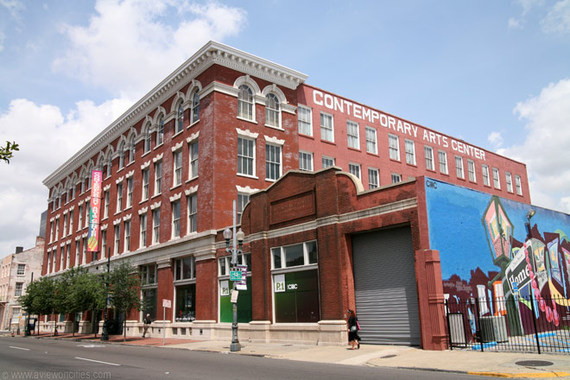Arthena had the opportunity to interview Andrea Andersson, Chief Curator of Visual Arts at the Contemporary Arts Center in New Orleans. The New Orleans native is taking her international art world experience and reinventing a museum outside the recognized contemporary art capitals of the world.
Q: When did you start with the CAC and tell us a little bit about your background.
I began at the CAC in January of 2015. Though a native of New Orleans, I had not lived in the city in over twenty years. After attending university on the west coast, at Stanford University, I spent the past fifteen years in New York. After completing my doctorate at Columbia University, I taught at Barnard College, during which time my exhibition work became a natural outgrowth of my scholarship and quickly overtook other, perhaps more academic forms of presentation and engagement.
"I always seek in my work to upturn traditional narratives, to look at a subject from the underside, to see how it might be interpreted otherwise."
Q: What issue is your main focus as a curator in 2016?
I have always been drawn, intellectually, to the margins. That is, I can't help myself but be curious and invested in a version of this world from the perspective of outsider. As such, I always seek in my work to upturn traditional narratives, to look at a subject from the underside, to see how it might be interpreted otherwise. The city of New Orleans provides me with a remarkable vantage point to do so.
Q: What are the biggest advantages of being part of a smaller institution and specifically the CAC?
At the CAC, under the executive direction of Neil Barclay, we have been challenged to reimagine how a contemporary art museum functions and to whom it speaks. We are a small staff realizing some very big dreams, but because of our size -- we are able to act nimbly and take action, and to really participate in and give shape to public discourse. This Spring, we will open the largest solo museum presentation of artist Adam Pendleton's work in the United States. It is a challenging exhibition, engaging at once the history of civil rights and the history of the avant-garde. Engaging two competing histories, it provides not only an aesthetic model but also a social model -- as to how those from different communities or traditions might enter into productive dialogue. Leading these kinds of conversations in the city of New Orleans seems to me a wild kind of advantage
Q: Does the cultural history of the city play a role in your approach?
In everything we do. Wonderfully, we live in a city where art and culture are not reserved for the select few. In New Orleans, art is lived; it is participatory; and it is not distinguished from other forms of life. At the CAC, our job is to interrogate forms and history of art, but this city reminds us daily that those forms and histories are far more various than the the traditional canon might lead you to believe.
Q: What’s your vision for the future of the CAC?
It's a vision, I hope, already underway -- to reinvent an historic institution, outside of the recognized contemporary art capitals of the world, and by presenting -- in New Orleans-- some of the most rigorous and exciting programming in America, to also intervene and upturn art discourses elsewhere.
"The rise of digital media gives new meaning to the notion of the "expanded field" of art."
Q: How do you think digital has affected the space?
The rise of digital media gives new meaning to the notion of the "expanded field" of art. The white cube is but one point in a constellation of sites -- concrete and digital -- in which work operates. And just as culture-at-large absorbed the logic and systems of print technology int he 18th century, contemporary culture now accommodates an entirely new way of thinking in terms of digital logic. It is not just a matter of new forms, but a matter of new ideas.
"The internet gives us a platform to speak broadly, but social media also provides us with the tools to make that conversation personal."
Q: How do you think social media and the internet have changed the art world, museums in particular?
Fundamentally, it makes our vision possible -- by making our local conversation global. Institutionally, we think, at once, of multiple publics -- our public in New Orleans, our public in America, our public in the world. The internet gives us a platform to speak broadly, but social media also provides us with the tools to make that conversation personal.
Q: How strong of a role does social media play for the museum?
One that is stronger everyday. It is the instrument that we use to communicate with those further afield for sure, but it proves itself regularly, as one of the most productive forms of address with our local public, as well. As someone who does not use social media in my personal life, I am only beginning to understand the power of "trending," but when I see a performance sell out or visitors standing in the wings to hear a conversation between artists, I get it :)
Interested in learning more about investing in art? Find information about the artists and collections open for investment on the Arthena platform by clicking here.

